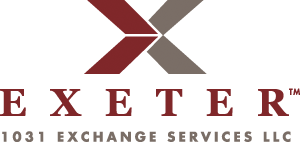Reporting Your 1031 Exchange for Income Tax Purposes
Your 1031 exchange transaction should be reported on your Federal income tax return for the year in which your 1031 exchange began. For example, if you sold your relinquished property in 2008 and subsequently acquired your like kind replacement property in 2009 your 1031 exchange would be reported on your 2008 Federal income tax return.
It is extremely important that you file an extension of time to file your Federal income tax return, then complete your 1031 exchange transaction, and finally file your Federal income tax return and report your 1031 exchange transaction on IRS Form 8824 if your 1031 exchange transaction straddles two (2) income tax years. Read more about the 1031 exchange deadlines.
IRS Form 8824 — Like Kind Exchanges
IRS Form 8824 requires that you provide the IRS with the description of your relinquished and replacement properties, the date your relinquished property was acquired by and conveyed to the buyer, the date the like-kind replacement property was identified to your Qualified Intermediary by you, and the date the like-kind replacement property was acquired by and conveyed to you. These last two (2) items are to ensure that you have complied with the 45 calendar day identification rule and the 180 calendar day 1031 exchange period. IRS Form 8824 also asks for any related party information.
IRS Form 8824, Part III, is used to calculate your gain on the disposition (sale) of your relinquished property and the adjusted cost basis of your like-kind replacement property. The fair market value of your relinquished and like-kind replacement properties is required as well as any liabilities that were paid off (given up) on the disposition (sale) of your relinquished property and received (new debt assumed) on the purchase of your like-kind replacement property, your cost of sale expenses for both, any cash (boot) received and paid, the cost basis of your relinquished property and non-like-kind property paid (given up), and any fair market value of non-like-kind properties received and paid (given up).
IRS Form 4797 — Reporting the Gain
Any taxable gain recognized will be reported on IRS Form 4797 or Schedule D depending on the character of the relinquished property. Your taxable gain must be allocated between ordinary income depreciation recapture, unrecaptured Section 1250 taxable gain, Section 1231 taxable gain, and capital gain.
IRS Form 6252 — Installment Sale Treatment
You may be able to report all or a portion of the taxable gain under the installment sale basis pursuant to Section 453 of the Internal Revenue Code if you accepted a seller carry back note as part of the consideration from the buyer of your relinquished property by completing IRS Form 6252. There are numerous exceptions for installment sale treatment so always consult with your tax advisor before proceeding with your transaction.
Failed 1031 Exchanges
You may still qualify to defer your capital gains if your 1031 exchange fails. It is possible that you may have a partial tax-deferred exchange or may be able to defer the income taxes from the failed 1031 exchange into the following income tax year under the installment sale rules.
It will depend on your specific situation and when you have the right to access your 1031 exchange funds. Read our article entitled "Year End Tax Planning with a Failed 1031 Exchange" for more information.
Federal Statute of Limitation
The Federal statute of limitations for income tax related audits is three (3) years. This means that the Internal Revenue Service has three (3) years from the date that your income tax return is filed to begin an audit of your income tax return. The statute of limitations does not start running until you file your income tax return.
There are certain exceptions to the three (3) year statute of limitations, including whether there was any significant under-reporting of taxable income or any income tax fraud involved with your income tax return filing.
State statute of limitations can vary widely, so you should consult with your income tax advisor to determine what your state statute of limitation is. The statute of limitations for the State of California is four (4) years from the date your income tax return is filed.
